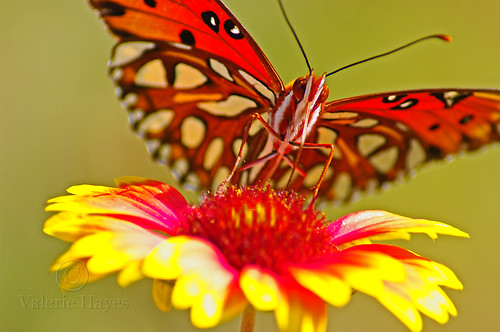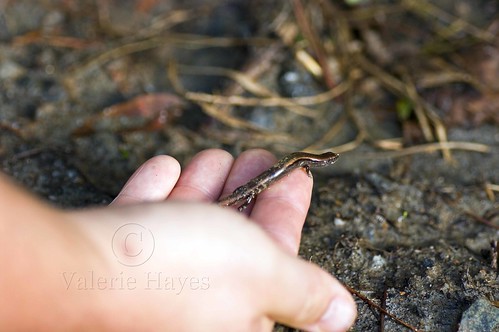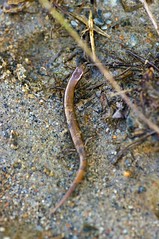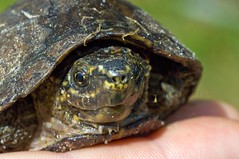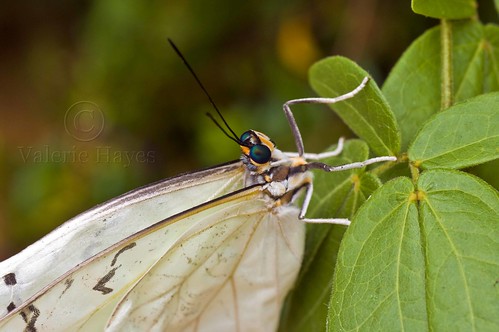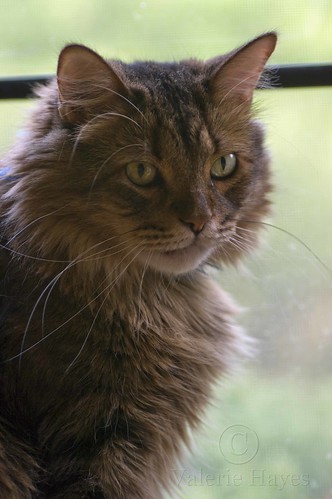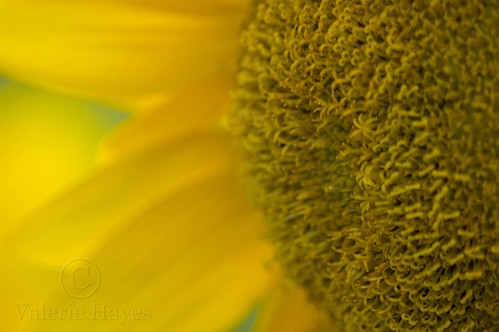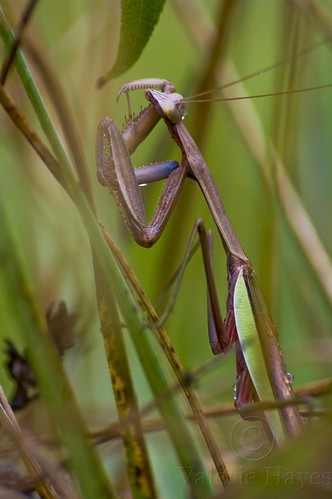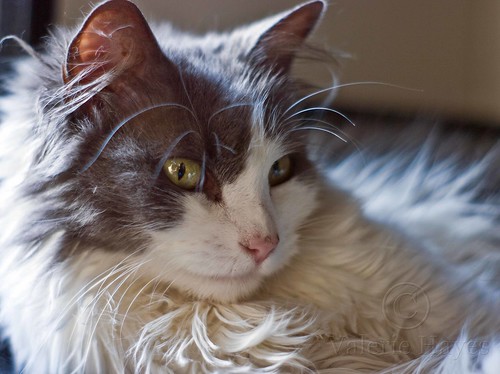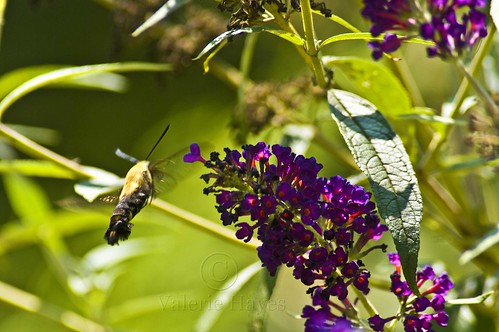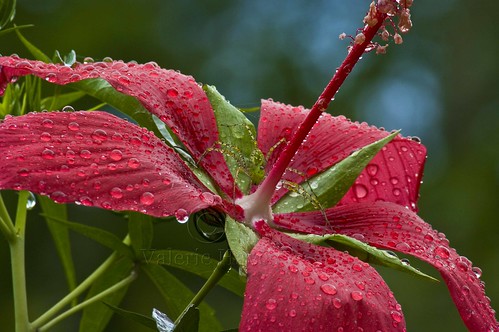Sunday, January 24, 2010
Atlanta Animal Welfare Examiner
http://www.examiner.com/x-35783-Atlanta-Animal-Welfare-Examiner
To receive email alerts when I publish a new article, click on the 'subscribe' button at the top of the page.
Friday, December 25, 2009
Interlude--Another Natural History Quote of the Day--Letters FromAlabama
I'll finish my review of Pleasurable Kingdom in my next post (with a more modern plot twist). Meanwhile, here's a plot twist to the story of animals and pleasure and science and natural history. Letters From Alabama was originally published in 1859. Yes, that's the same year as Darwin's Origin of Species, and quite some time after Descartes wrote his crap.
Food for thought on a day when you've probably already eaten too much.
Philip Henry Gosse was a young naturalist from England when he went to Alabama to teach school. He left after eight months, disgusted with slavery. The following is from p. 149 of the 1983 reprint:
"An eye accustomed to only the small and generally inconspicuous butterflies of our own country, the Pontiae, the Vanessae, and Hipparchiae, can hardly picture to itself the gaiety of the air which swarms with large and brilliant-hued Swallowtails, and other patrician tribes, some of which, in the extent and volume of their wings, may be compared to large bats. These occur, too, not by solitary and straggling individuals: in glancing over a blossomed field or prairie-knoll, we may see hundreds, including, perhaps, more than a dozen species, besides moths, flies, and other insects.
When contemplating such a scene thus thronged with life, I have been pleased to think of the very vast amount of happines that is aggregated there. I take it as an undoubted fact, that among the inferior creatures, except when suffering actual pain, life is enjoyment; the mere exercise of the bodily organs, and the gratification of the bodily appetites, is the highest pleasure of which they are capable: for as Spenser says--
'What more of happiness can fall to creature
Than to enjoy delight with liberty?'
Fate of the Butterfly
To look then on the multitudes of beings assembled in so circumscribed a spot, all pursuing pleasure, and all doubtless attaining their end, each one with an individual perception and consciousness of enjoyment, --what a grand idea does it give of the tender mercy of God, as a God of providence!
Let us extend the idea:-- there are about one hundred thousand species of insects known*; let your mind try to guess at the number of individuals of each species in the whole earth, (perhaps if you count the clouds of musquitos and gnats that issue from a single marsh, in a single night, it may assist you in the conjecture,) think of the other, less populous orders of animals, fishes, mollusks, testacea, animacules, &c., &c., reduce them to individuals, and you may have some distant approximation to one idea of Him, who "openeth His hand and satisfieth the desire of every living thing."EVERY LIVING THING! I have often thought that no one can appreciate the grandeur, the sublimity, of this sentiment of the Psalmist, like the devout naturalist."
*There are now over one million insect species known.
Friday, December 18, 2009
Belated Mini-Review of Balcombe's Pleasurable Kingdom and thoughts onNo Kill--Part 1
Jonathan Balcombe published Pleasurable Kingdom: Animals and the Nature of Feeling Good back in 2006, but I only just got around to reading it. Clifford bought it for me. I have to admit to experiencing mixed feelings upon first holding this book in my hands, and not because of what Balcombe wrote--I recommend this book highly to any animal-lover, armchair natural-historian or biologist--no, my trepidation and annoyance was due to the presence of a forward by Peter Singer, author of Animal Liberation, and apparently mentor to Ingrid Newkirk, founder and president of PETA, and a puff by Wayne Pacelle of HSUS. I had to wonder at Balcombe's taste.
I began by reading the foreward. Singer begins with an anecdote about dolphins surfing (not suffering), and goes on to say, "Despite such experiences--and growing up with a cat who certainly showed she liked being stroked--my focus has always been on animals' capacity to suffer, from the time I started thinking seriously about the ethics of how we treat them." He goes on to say, "But with all this emphasis on animal suffering, I and many others in the animal movement have neglected animals' capacity to enjoy their lives. Fortunately Jonathan Balcombe's book has restored the balance." I think that this book is excellent, thought-provoking, informative and an enjoyable read. I do not think that it has magically restored balance to the animal movement, and I offer as evidence the continued opposition to the No Kill movement of groups such as PETA and HSUS and of their respective leaders in particular.
Singer is clearly primarily interested in animals raised for food and for laboratory research. He does not mention the millions killed in shelters each year. I really wish that he had. He wrote about his cat. Pets are the animals whose capacity to enjoy life is most readily experienced , observed and shared by most people. Do Singer and others regard the tragic killing of millions of shelter pets as mere 'collateral damage' in their greater quest for a more perfect world? Most people with pets don't need to read a book to know that their dog or cat has the capacity to experience pleasure and the ability to seek it out. American 'shelters' deprive millions of animals of these things annually, and for no other reasons than laziness and adherence to entrenched and regressive views. The majority of these animals are not inevitably or irretrievably suffering. They're jsut homeless. They have the capacity to enjoy life. Singer could have said something about this. He maybe almost did. But he didn't. I'm disappointed in that, but he indicated a little chink in the old Benthamite armor. Suffering isn't the only thing. There is a whole 'nother facet to the lives of animals--pleasure. Hallellujah for that.
Balcombe begins the book with an exploration of how animals' capacity to experience pleasure is adaptive in the Darwinian sense, and how it is changing how we view animal minds and how animals are portrayed in the media.
For now, I'll leave you with a quote from the book:
"The mass media often perpetuate the stereotype that life is harsh and joyless for wild creatures. An article on Norwegian polar bears poisoned by toxic pollutants 'migrating' from industrial regions in the south describes the 'brutal, unforgiving' surroundings. 'From the moment of birth--even conception--animals here struggle against the odds. Most polar bears die before their first birthday.' It is sad that not all polar bears grow into adults, and a shame that humans are making things worse. And yet, a six month old polar bear has been suckled and nurtured by a protective mother, has experienced over 100 sunrises and sunsets, and probably hasn't bemoaned the transience of life. Most lives, even shortened ones, are probably better lived than not lived at all."
George, the dog in the picture above, is experiencing the pleasure of being alive. A few months ago, he was a skinny little guy on death row at a high-kill shelter in Georgia. He is part of the fortunate minority from that shelter. Most end up as rotting corpses in the county landfill, and that is unacceptable. He was lucky, but luck should have nothing to do with it.
Tuesday, December 1, 2009
Quote of the Day--Origins of Nature's Beauty
 "How can we explain the fact that animals which consistently try to remain hidden, or to repel others by their aspect, so often appear attractive, or even beautiful to us, which is the opposite of what we might expect? Should we not more often find them severely plain or repulsive, as some of them are? However, the elements of beauty--form, color, pattern and texture--are not absent from creatures that try to hide, to warn, or to repel. Feathers have such a pleasing texture that birds are seldom ugly. We enjoy the bright colors that so often proclaim unpalatability or venom. The pigments that color the exposed surfaces of animals tend to be deposited in definite patterns rather than at random. Fear need not diminish our enjoyment of cryptically or aposematically colored organisms, for most are not harmful; they ask only to be permitted to live in peace. When we add to all this our pleasure in using our eyes, recognizing forms and patterns, it is not difficult to understand why creatures that shun observation, or warn that they should not be molested, so often attract us by their beauty."
"How can we explain the fact that animals which consistently try to remain hidden, or to repel others by their aspect, so often appear attractive, or even beautiful to us, which is the opposite of what we might expect? Should we not more often find them severely plain or repulsive, as some of them are? However, the elements of beauty--form, color, pattern and texture--are not absent from creatures that try to hide, to warn, or to repel. Feathers have such a pleasing texture that birds are seldom ugly. We enjoy the bright colors that so often proclaim unpalatability or venom. The pigments that color the exposed surfaces of animals tend to be deposited in definite patterns rather than at random. Fear need not diminish our enjoyment of cryptically or aposematically colored organisms, for most are not harmful; they ask only to be permitted to live in peace. When we add to all this our pleasure in using our eyes, recognizing forms and patterns, it is not difficult to understand why creatures that shun observation, or warn that they should not be molested, so often attract us by their beauty."--A.F. Skutch, in his 1992 collection of essays Origins of Nature's Beauty (pp. 27-28)
This is the first of a series of interesting, usually natural history quotes I plan to post from time to time. Enjoy!
Wednesday, November 18, 2009
Dead Pit Bull Neuters Ed Sayres!

Wednesday, November 11, 2009
Turtle God Lives
http://news.yahoo.com/s/nm/20091110/od_nm/us_turtle_odd
Saturday, October 31, 2009
October ground Skink (Scincella lateralis) and Other Finds on A Walk
This little Ground Skink skittered across the dirt road we were walking on the other day. One thing I like about Georgia is herps and other "cold-blooded" critters being active this late in the year (well, not the ticks and chiggers and fire ants). Other finds along this walk are pictured below...
Another view of the skink:
A little Stinkpot, spotted by our dog:
A faded Buckeye perched on some gone-to seed member of the Asteraceae in a meadow that was teeming (by my standards) with butterflies:
Sunday, October 11, 2009
Green Anole on Yellowing Tulip Tree Leaf
I think that Kermit the frog was actually based on a Green Anole (Anolis carolinensis). Jim Henson grew up in Mississippi, so he certainly had the opportunity to observe these winsome and entertaining insectivores. They're still active and I have seen quite a few this weekend, incuding a tiny hatchling. They are found in the wild throughout the Southeast, as well as in pet shops elsewhere. These animals remain relatively common due to their tolerance for human-caused disturbance (up to a point). There is some evidence that the introduced Brown Anole (Anolis sagrei) may negatively impact their populations. They are a common species that I would like to see stay common.
Sunday, October 4, 2009
White Morpho
This image of Morpho polyphemus is popular on my Flickr site. People seem to like how he (or she--I can't tell) appears to be looking at the camera, though that makes me think of the Far Side cartoon of the last thing a fly ever sees (one of Gary Larsen's trademark overweight women wearing cat-eye glasses and weilding a fly swatter, repeated as innumerable octagon-shaped tiles) only the view is me and my Pentax.
I think that this particular individual has somewhat crumpled wings, like it didn't emerge quite right. In the butterfly house there aren't any predators, so the butterfly's lifespan is probably unaffected.
Saturday, October 3, 2009
EBT Nest With NINE Eggs!
Owl Butterfly on tree Trunk Close Up
Another photo from the butterfly house at Callaway Gardens. I believe the species is Caligo memnon. Insect eyes are so inscrutable. What do they see?
Wednesday, September 30, 2009
Heliconius sp.
Went to the Callaway Gardens butterfly house last week. I'm not sure what species this is other than that it is some type of longwing. It didn't match any of the species in the little guides that were provided. A couple of butterflies seemed to be obsessed with laying eggs on my camera, which was pretty strange. I wonder if these butterfly houses are allowed to provide them with their appropriate host plants. I'm pretty sure that they have to buy chrysales from licensed dealers and it may be illegal to breed exotic butterflies, so not providing host plants would prevent successful breeding.
Its great to be able to observe so many individuals of species I wouldn't otherwise see. Photographing them is still a challenge, even though they are in captivity, but not quite as difficult as photographing them in the wild. It was Blue Morpho Month, but I'm not sure that I got any Blue Morpho pictures. I got numerous photos of what I think are Owl Butterflies, a species that looks somewhat similar, and is even blue on the dorsal surface, but I'm no lepidopterist...
Tuesday, August 25, 2009
Chomper Meditating
Monday, August 24, 2009
Xavier
The Tamron 90mm macro arrived today and I was testing its other use--portraiture. Nice, sharp lens. Very smooth. I haven't seen evidence of the chromatic aberration that plagues my other lenses. The colors are very good and the length is good. I can get very close to flowers. I will try some butterfly and box turtle photography with it soon.
Sunday, August 23, 2009
Beautyberry
The beautyberries are coloring up, starting with those low on the branches. I wasn't expecting to tsee this just yet. They are food for migrating birds, so fall migration is not far away. I haven't seen another fruit quite this color. This is another experiment withthe old 5omm manual lens. The pictures have a different feel than do my newer zooms, which is probably due to this lens opening up to f/2, but maybe something else is going on as well...
Saturday, August 22, 2009
Sunflower Close-Up
An extreme close-up with limited color palette and depth-of field. A very few characteristics o this flower are emphasized--the yellowness and the tiny florets in the center of the disc...
Lady Mantis Bathing
Actually, this picture should be entitled "Dude Looks Like a Lady Mantis Bathing" because the mantis is a male, based on his slim build and long antennae, I am told. He lived in a butterfly bush in the backyard for a couple of weeks and I photographed him many times. He didn't seem to go after butterflies, though, preferring to hang out low on the bush most of the time. I frightened him away one day by trying to move him higher up near one of the flowers for a picture. He flew off to a nearby holly bush and then a maple tree where I lost track of him. He was very tolerant of photography as long as I didn't try to pick him up. When I did, he decided that I was a predator and that location was no longer safe. I haven't seen him since. His flight was quite spectacular. The Asian painters really got it right back in the day. I howerver diodn't manage to get ny pictures of him flying.
Thursday, August 20, 2009
Passion Vine on Fence
Here's a photo of passion vine (Passiflora incarnata) growing on a fence wire at Fairywood Thicket Farms. This Georgia wildflower seems fantastically, gratuitously complex, but then what in nature isn't? For some reason, this flower just makes you notice unexpected beauty and complexity. Missionaries were taken with it and attached religious symbolism to the various floral parts, using the flower as a teaching tool to spread Christianity. To caterpillars of fritillary butterflies, it is their host plant, and they make an interesting juxtapsoition with their food, all black and red and spiky and hungry, then they pupate into gratuitously beautiful chrysales and emerge as black and orange butterflies studded with pearly spots. They flit through the sunlight and nectar on zinnias and verbena and most any other flower. The fruits of this plant are hollow and rather tangy. I suppose the hollowness is how they got the name 'maypops', though May would be very early for them around here.
Wednesday, August 19, 2009
Ernest
I dusted off my old 50mm 'normal' lens, circa 1983. Pentax says that the new digital SLRs are back-compatible with their old manual lenses from the film era and even with the screw-mount ones, provided an adapter is used. Of course, just mounting an old lens on a new camera won't make it autofocus or communicate things like f-stop to the camera's computer, but with a couple of adjsutments outlined in the Pentax manual and the Magic Lantern guide, the lens worked just fine, though compared to my zoom lenses, it is tiny. Focusing is completely manual and only the center focus point is available with this lens. Focusing is slower than it is when using the manual setting with the newer lenses for some reason. Since there is no split screen, I have to rely on the focus alert and it sometimes allows the focus to over-and under-shoot the mark a couple of times before accepting it. Still, this lens lends itself to candid and hand-held shooting a lot more than do the larger zooms, including the one that covers 50mm. Having f2 available is great for available light photography, and Pentax's shake reduction is in the camera where it belongs, so it applies even to this lens, enabling sharp hand-held photography at 1/30 second.
This is Ernest, who I raised from the time she was 11 days old. Yes, she. I can't sex kittens to save myself, and by the time I figured it out, I'd already named her. It doesn't even seem strange to me.
Tuesday, August 18, 2009
Hawkmoth on Butterfly Bush
I'm not sure why I like this picture. Maybe its the lighting. The hawkmoth is blurred by motion, but it is very difficult to freeze their motion even in bright light. This animal, whose scientific name I still have to look up, is nectaring at a butterfly bush. The y can be mistaken for hummingbirds for their appearance and behavior. The larvae are called hornworms. It amazes me that a caterpillar can turn into something like this.
Monday, August 17, 2009
Hibiscus With Green Lynx Spider
I took this photo yesterday, immediately after a rain shower. The spider is a green lynx spider Peucetia viridans (Hentz). Now that I am becoming a more proficient and prolific photographer, I will try to post the "Photo of the Day" to this blog, which I have been neglecting in favor of Flickr. Here I will post more extensive information on the natural history of my photographic subjects, and the story behind each picture. This particular picture is an example of how macro photography enables you to notice things you would ordinarily overlook. I have a particular affinity for things ordinarily overlooked, and in general, I think I'm a pretty good observer, but I didn't even see this spider when I first took the picture. I was photographing the hibiscus and only noticed the spider whan I reviewed the images a few minutes later on the LCD screen. I would have liked to photograph the spider against the red petals, but then he probably positioned himself on the green sepal deliberately, so I didn't try to interfere. These spiders are known for preying on insects regarded as both harmful and desirable. They even make a habit of eating wasps and other stinging insects.
Sunday, July 5, 2009
Disappearing Box Turtles


Thanks to Sandy Barnett for the photos and the story of Boxie.
Saturday, July 4, 2009
Tuesday, June 30, 2009
Fun With Camera RAW
002LoResCopyright.jpg)
This image was originally taken with an inexpensive 5MP Kodak point-and-shoot. I liked the composition, but the image had problems. I tried various fixes in PSE7 and in Picture Window, but then read that it was possible to open a JPEG in Camera RAW of PSE7 and to manipulate it there. This strategy seemed to yield the best fix so far. Others looked garish. The window screen is a necessary but problematic part of the picture. It evidently threw the original exposure off quite a lot.
The two predators watching each other in this picture are Xavier the Maine Coon cat, and Broken Claw the praying mantis who hung around the backyard garden area almost two years ago. Her missing left claw made her easy to recognize, but didn't appear to shorten her life span. She was at least 4" long. Insects grow big in the South (more on that when I post on Hercules (a.k.a. Rhinoceros) Beetles). Mantids are catlike in a variety of ways, from the shape of their heads to their behavior--watching and grooming, for example.
Here is the original image as it came out of the Kodak:
Copyright.jpg)
Monday, June 29, 2009
Learning Photoshop

 I've been learning to use image editing software, experimenting with Photoshop Elements 7 and with a trial version of Picture Window. These two images illustrate the dramatic improvements that you can make to an image with a little effort in PSE 7. On the right is the image as it came out of the camera, with only a watermark added. On the left is the same image with some sharpening and adjustments to contrast and color saturation. I think its pretty dramatic. The picture still needs some work in terms of noise reduction. I took it soon after I got my new Pentax and I was still very early on in the digital learning curve and shot it at a high ISO.
I've been learning to use image editing software, experimenting with Photoshop Elements 7 and with a trial version of Picture Window. These two images illustrate the dramatic improvements that you can make to an image with a little effort in PSE 7. On the right is the image as it came out of the camera, with only a watermark added. On the left is the same image with some sharpening and adjustments to contrast and color saturation. I think its pretty dramatic. The picture still needs some work in terms of noise reduction. I took it soon after I got my new Pentax and I was still very early on in the digital learning curve and shot it at a high ISO.Saturday, May 23, 2009
Happy World Turtle Day!
Tuesday, September 23, 2008
New Life




Monday, July 28, 2008
High Summer
.JPG)
It's high summer in Georgia. Insects calling and jumping through my barely-mowed yard (crickets, katydids, grasshoppers cicadas). Black-and Yellow Argiope spiders, some quite large, are weaving their orb webs to glint in the sun and catch insects, some almost as big as they are. The silk anchor lines are amazingly tough and resist rather than break when I accidentally walk into them. There are many more dragonflies than last year and at dusk, a small army of toads (Bufo americanus and Bufo fowleri)emerges from wherever it is that they hide during the day, to hop in search of insects in the relative cool of the night. Most frogs seem to be done calling for now, but at dusk or at the suggestion of rain, the occasional Cope's Gray Treefrog (Hyla chrysoscelis)will trill. I've been working on my Box Turtle (Terrapene carolina)research, doing some sketching and painting, strategizing about a website to promote my artwork and building a few rain barrels. Lo and behold, they work! I'm also working on a few new county records for some local herps, inspired by my volunteer frog call monitoring and the new Amphibians and Reptiles of Georgia, which I highly recommend. More on the new county records in a future post...
Pictured above is a newly transformed Cope's Gray Tree Froglet. I took this picture at my backyard frog pond last year. Perhaps this little gem is one of the ones I can hear trilling when it rains.
Thursday, March 20, 2008
Terrapin Diary


Saturday, January 19, 2008
Snow

Friday, January 18, 2008
Ring around the moon

Thursday, January 17, 2008
Juxtaposition

Wednesday, January 16, 2008
Sleety night in Georgia

Still, it was possible to appreciate snow as magical because it was an event, not a constant presence accompanied by months of unrelenting grey skies.
